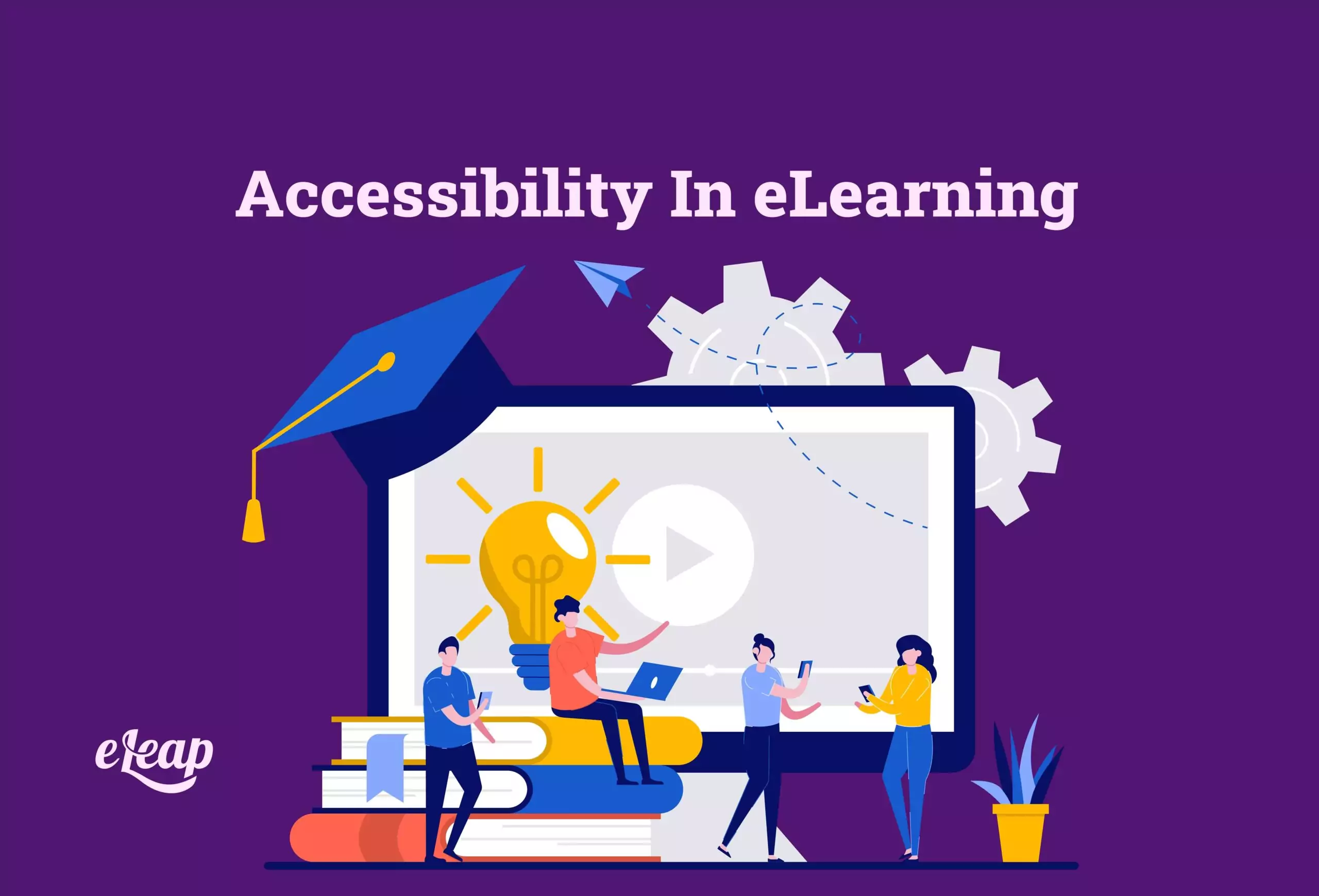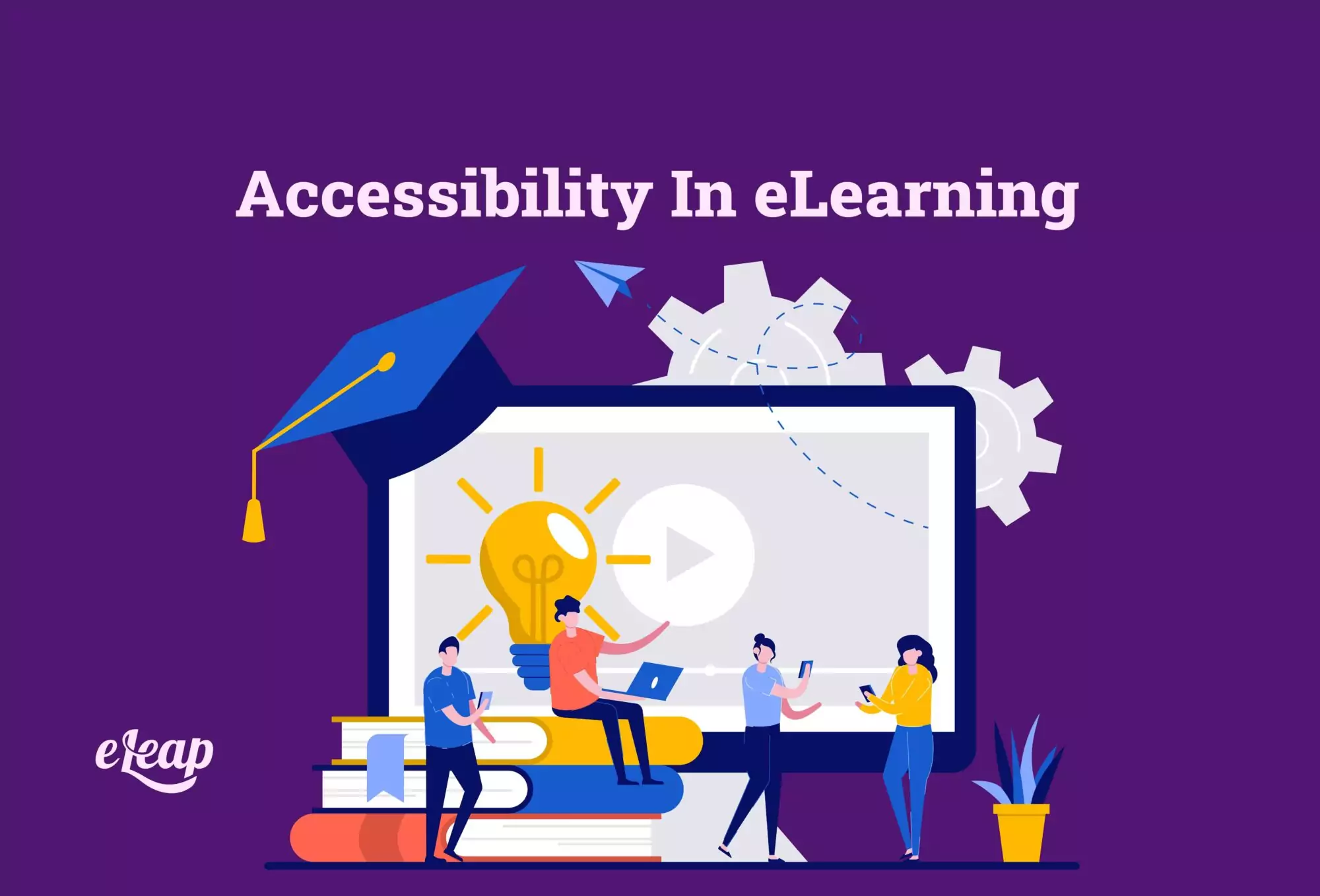Accessibility In eLearning

What does accessibility mean when it comes to eLearning? The term accessibility in general usually describes the availability or ease of use for all individuals to take advantage of certain services. For example, certain buildings must include accessibility for people that have certain disabilities.
However, the term means something much different when it comes to eLearning and LMS. In this context, it includes the use of various techniques to create learning and training content that’s available to all users, including ones with certain visual and learning impairments.
Designers of these platforms can include accessibility into each version of learning software they develop. This includes users and employees with hearing impairments, visual challenges, and different learning disorders.

The Importance of Accessibility
Accessibility should be included in various eLearning and LMS platforms for several reasons. The first is having the ability to extend your most important learning content to everyone within your organization.
When individuals have a cognitive disorder or challenges associated with hearing and seeing, this doesn’t mean they’re less efficient employees. Content contained on your eLearning portal may hold information that will allow them to develop further skills to advance their careers and your company’s overall goals.
If your platform doesn’t include a fair level of accessibility, these employees may miss out on a chance to engage in educational material that otherwise could have had a huge effect on their development.
Additionally, most countries seriously look at issues of accessibility. When certain employees with learning or behavioral challenges or issues seeing or hearing can’t take advantage of the same benefits as other team members, this is viewed as discriminatory behavior.
In many settings, this could be grounds for a lawsuit. This is why adopting barrier-free learning is critical for your organization.
First, let’s examine a particularly important element of accessibility. It’s vital that you understand the differences between the latter and usability.
Differences Between Accessibility and Usability
Usability is your learner’s overall experience with your course or platform. Things like the ease of navigating, the interface, and how courses are worded are included under elements of usability.
However, accessibility includes the discrimination of certain users based on things like learning disabilities. Basically, having a high level of accessibility means that all individuals, whether they are with or without learning disabilities, should be able to navigate, digest, and understand all of your course material. They should also be able to engage with peers just as easily as the rest of your team.
The usability of your platform includes elements of how efficient and effective your platform is. Additionally, usability also covers how pleased employees are with your courses’ overall setup and functions.
At some point, usability and accessibility may intersect. For example, individuals with visual disorders or color blindness may need to adjust the color settings or contrasts to see the material more efficiently.
If certain users have hearing challenges, including captioning in your course would benefit these users. Both of these are examples of boosting the accessibility of your platform.
However, these elements also raise the level of usability because these features can benefit all users. Let’s take a look at some additional examples of increasing the accessibility of your platform.
Increasing Your Accessibility
The following are some additional changes that you could make to your platform that raise the overall levels of accessibility.
- We briefly mentioned captioning in the previous section. Screen readers may also be used during any additional material that includes speech or other auditory elements.
- Individuals who are completely blind may have challenges when it comes to typing and inputting other information, especially during test-taking and quizzes. Voice recognition or talk-to-text elements added onto your eLearning platform will allow these individuals to participate equally on your platform.
- Not every case of visual impairment includes a team member being blind. Some of your employees could have extreme challenges with reading small print or small pictures and graphics. Implementing screen magnifiers can help these users participate and digest the material in the same manner as the rest of your team.
If you want to make sure your platform includes all of the elements of fairness and remain accessible to all users, you should analyze your platform using the four principles of accessibility. These principles are directly from the Web Content Accessibility Guidelines.
Four Principles of Accessibility
These four principles outline the most important elements governing a platform’s incorporation of all elements of fairness. Technically, this governs all types of content that are found online but can be very efficient when it comes to eLearning platforms.
Perceivable
All of the content on your platform and in your courses must be perceivable for all users. This includes users having the option to participate in more simplified versions of courses that are broken down in ways they may understand easier.
Not all individuals learn the same. Many people can be incredibly smart and efficient in their areas of expertise but may have difficulties or learning challenges and need to engage with course material in a different manner.
Operable
The course material must be easy to navigate and operate. This could mean having to make changes with visual and auditory elements.
Understandable
All of the information contained in the course outline must be easy for all employees to understand. This also means having certain elements of the course simplified. It may also mean removing certain parts of the course that are all reading-based and instead shifting towards a more visual approach.
Robust
Having robust course material in the context of accessibility means all of the information can be interpreted, altered, or broken down by a variety of technologies that assist users with disabilities.
Hopefully, you understand the importance of accessibility when it comes to your eLearning courses or learning management system. Not only can this turn into an issue of regulatory compliance, but it’s the right thing to do.
All of your employees should have the ability to learn course material in the same ways as the rest of your team. Including elements of accessibility will ensure this and make your team more efficient in the end. Contact us today for a free consultation.